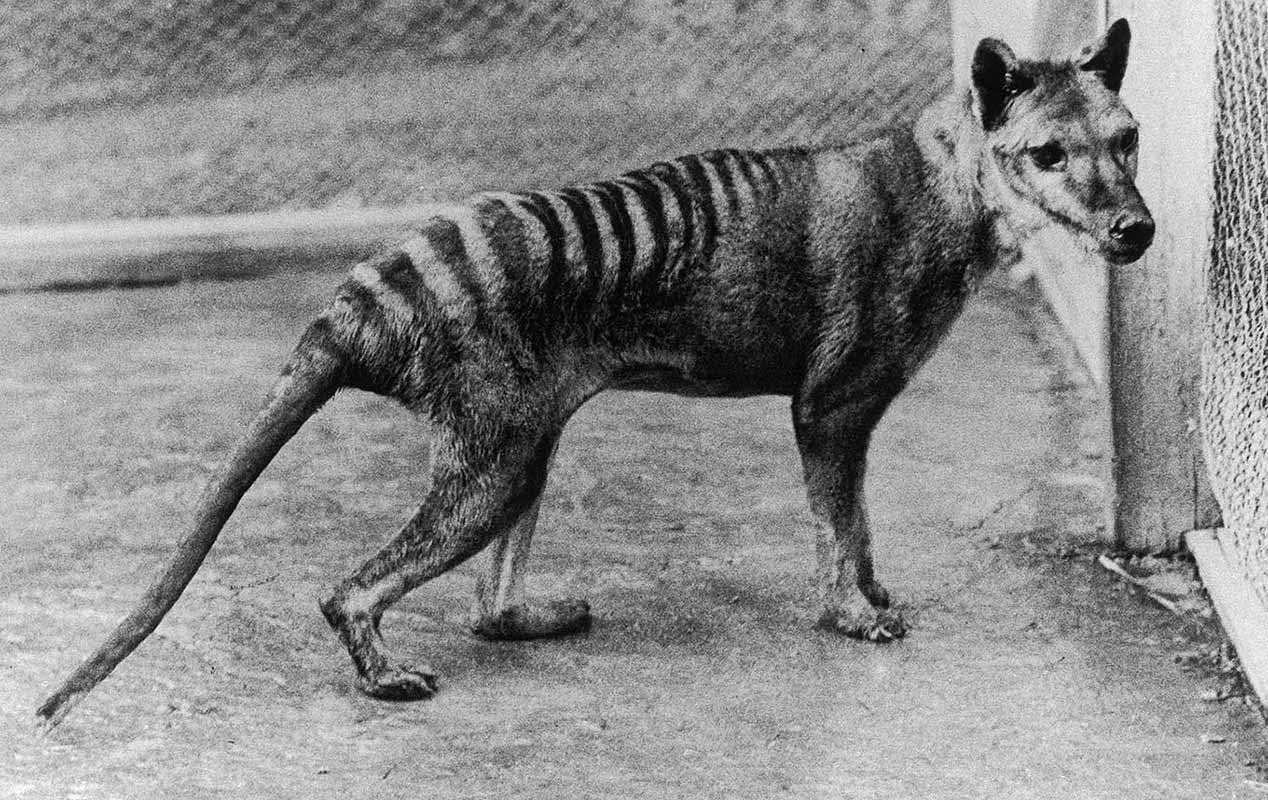Table of Contents
One of the more remarkable facts about the thylacine (Tasmanian tiger) is just how little we actually know about them. Already extinct on the Australian mainland, the species vanished in little over a century after the arrival of Europeans in Tasmania. Although hunting was previously blamed for its extinction, it is now thought that disease was most likely the death-blow to the species (Tasmanian devils also experienced a population crash in the 19th century, but managed to rebound).
Whatever the cause, the fact remains that very little was learned about the thylacine before they vanished. By the time it was realised that the species was in danger, it was already too late.
Not much is known about their behaviour – most observations were made anecdotally and by daylight, whereas the animals were mostly nocturnal – and only a handful of black-and-white photos and films were ever made. In fact, the earliest known photo of a thylacine was taken at London Zoo.
Even less physical remains of the Tasmanian tiger are known to exist. A preserved pelt was recently discovered in a town on Tasmania’s west coast.
But a chance sighting of a Twitter post has unearthed a magnificently preserved thylacine pelt in, of all places, Whanganui.
It was bought originally in 1923 by Archibald Robertson, a natural history collector from New Zealand.
Robertson stored the thylacine pelt flat in a drawer for decades, which protected it from light and air.
It was not until after his death in 1970 that the pelt was found by his family and hung on the wall of a family friend’s canoe and taxidermy shop.
Fifty years later, thanks to a photo first shared to Twitter, the pelt’s significance has come to light.

A chance Twitter post lead to the discovery of this thylacine pelt in Whanganui. The BFD.
A museum professional spotted the blurry photo on social media, which prompted him to make a visit to Whanganui. What he found was one of the best-preserved thylacine pelts known.
A microscopic examination of the recently rediscovered pelt revealed the animal’s fur varied in coarseness, shape and colour, and it had at least three layers of body hair.
David Thurrowgood, a Launceston conservator, said the pelt’s colours were much more dramatic than in other faded thylacine pelts that existed in museums, which made the pelt one of the best still in existence.
“The rich chocolate browns on the stripes and honey colours, down to really beautiful greys on the underside of the animal, indicate how beautiful it would have been,” he said.
“There’s only been a handful of observations done of thylacine hair, so I was able to look at the hair in quite a different way and there are eight different types of hair on a thylacine.
“Some of the hairs are hollow, a bit like other species who live in the cold and use those fine pockets of air to keep themselves warm and be well adapted to the Tasmanian climate.”
The newly-discovered pelt is providing not just a glimpse of the thylacine’s vanished beauty, but important DNA information.
The DNA of most animal pelts were destroyed by past museum preservation processes that treated the skin with arsenic or mercury, but this pelt had only a light vegetable tanning from the original collector.
After bringing the pelt home to Tasmania, Mr Thurrowgood compared fragments of long DNA it retained with DNA samples held at the University of Melbourne, confirming its authenticity[…]
The pelt has now found a permanent home at the National Museum of Australia in Canberra’s internationally significant thylacine collection.

“Benjamin”, the last known thylacine, died in a zoo near Hobart in 1936. The BFD.
If you enjoyed this BFD article please consider sharing it with your friends.







